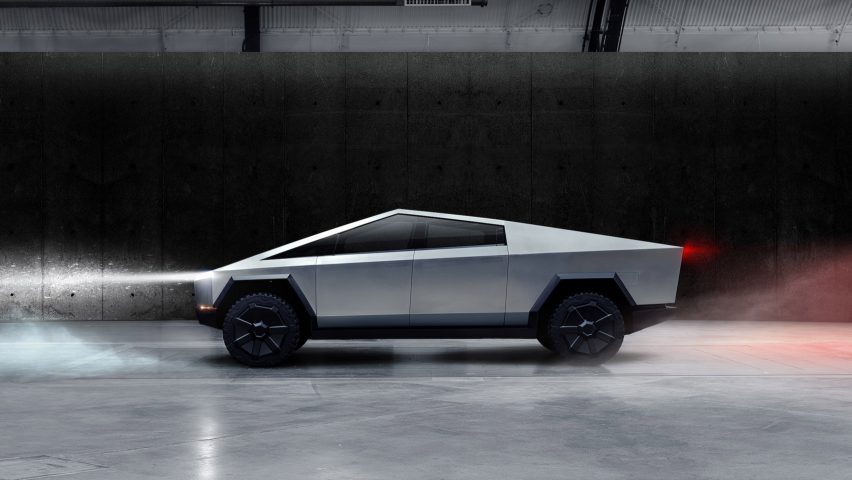
This week, people reacted to Elon Musk's Cybertruck
This week on Dezeen, Tesla's futuristic Cybertruck polarised opinions and we continued our high-tech architecture series.
The Cybertruck is a bulletproof electric pickup truck made from cold-rolled stainless steel that has armoured glass windows.
The vehicle's unconventional, sci-fi-style design divided opinions on social media, as some praised Musk for his "courage" in creating such a "fascinating" vehicle, and others labelled it as "ridiculous".
Lego also responded to the launch by mocking Tesla with a "guaranteed shatterproof" brick model of the Cybertruck.
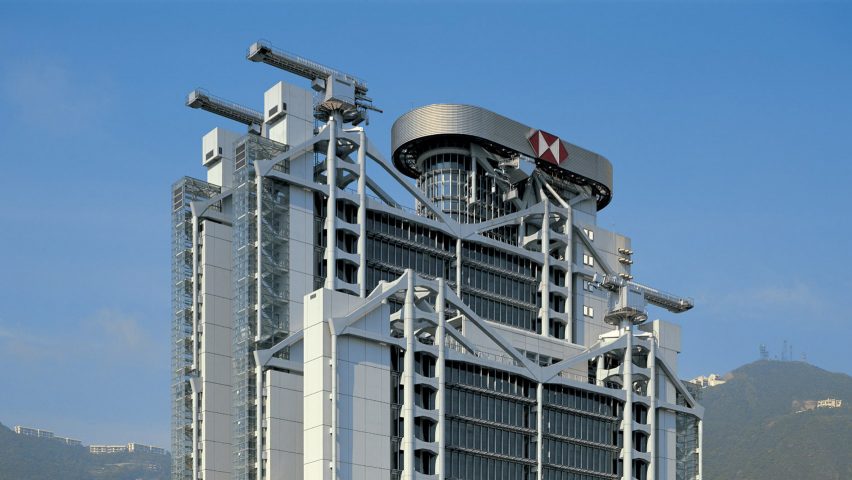
We continued our high-tech architecture series this week with a profile of Italian architect Renzo Piano and his mile-long Kansai International Airport.
We also took a look at Foster's high-tech high-rise building designed for HSBC – the forty-four-storey headquarters for the Hongkong and Shanghai Banking Corporation, which established the architect as a global brand.
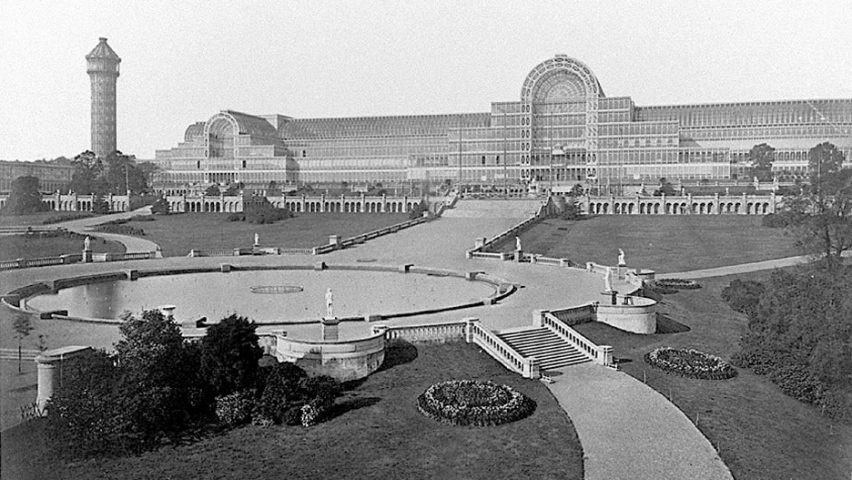
Foster also revealed to Dezeen that if he could visit any building from history, it would be the Crystal Palace, designed by Joseph Paxton to house the 1851 Great Exhibition in London.He cited this building as a major influence on high-tech architecture and branded it "the birth of modern architecture".
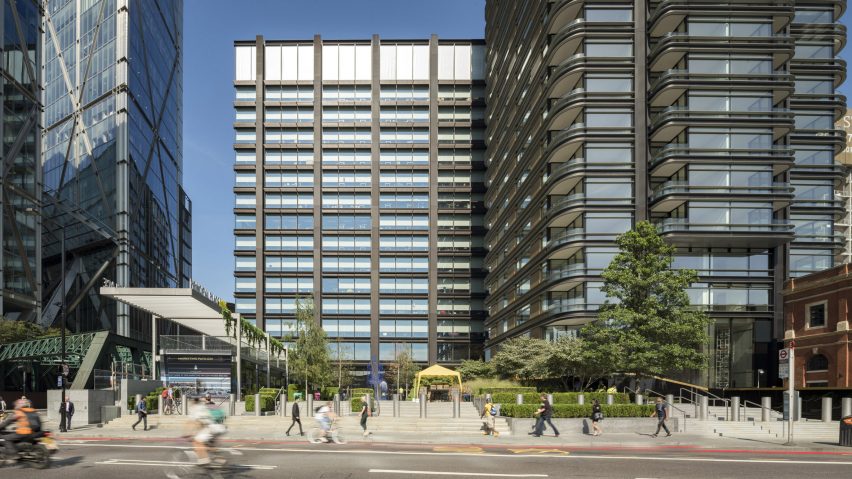
Foster's firm completed its first residential skyscraper in London this week, which takes the form of three different-sized volumes arranged in a cruciform.
Named Principal Tower, the 50-storey building contains 299 luxury apartments and marks the completion of Principal Place – a mixed-use development located between Shoreditch and the city's financial district.
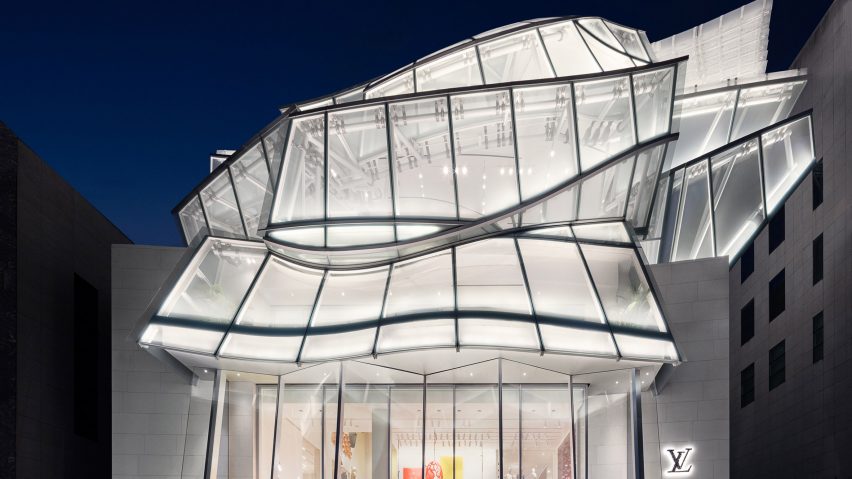
Also in architecture news, Frank Gehry topped the white stone building of Louis Vuitton Maison Seoul with a stack of sweeping glass sails as a nod to traditional Korean architecture.
Designed to "give an impression of flight", the glass panels help to filter light throughout the building's interiors, which were designed by architect Peter Marino.
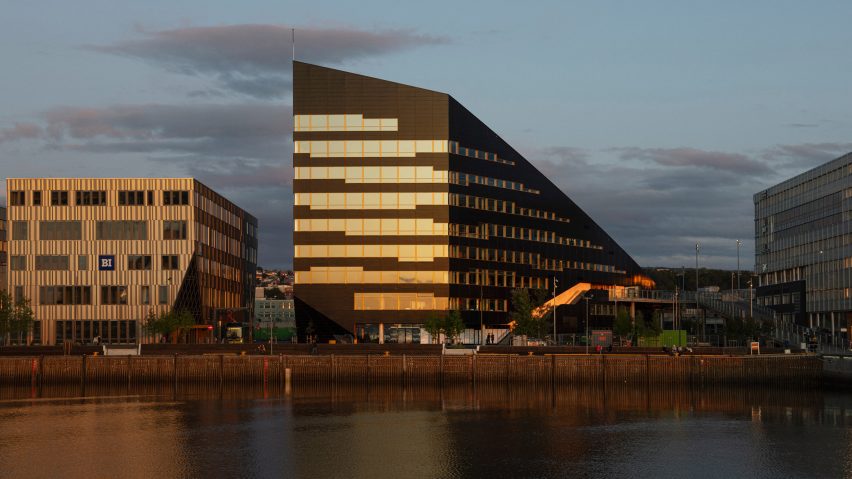
This week Snøhetta announced that it will aim to make all its buildings carbon negative within the next 20 years.
The move will mean that all their buildings will generate more energy than they consume over their lifetime, which includes the carbon emitted during the production of building materials, construction, operation and decommissioning.
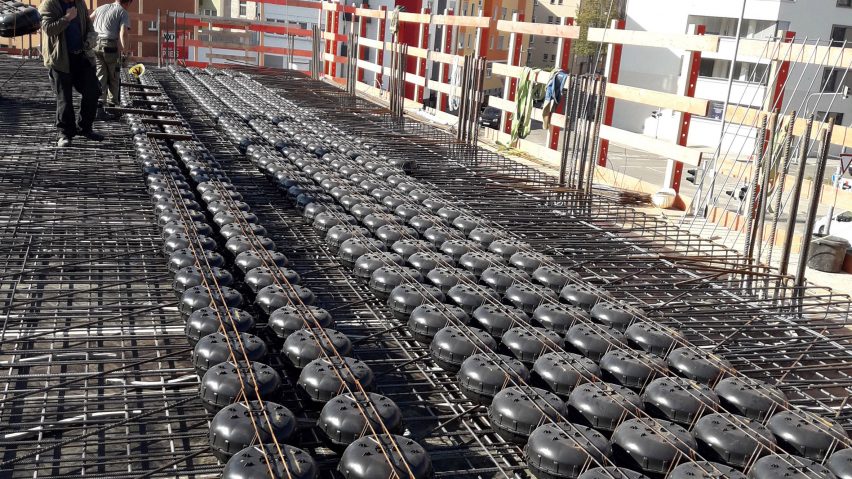
Also popular with Dezeen readers was a German construction project that saved an estimated 136 tonnes of carbon dioxide from entering the atmosphere by building with concrete slabs that include air pockets made of recycled plastic.
The inclusion of these air pockets mean that the slabs comprise up to 35 per cent less material than solid reinforced concrete.
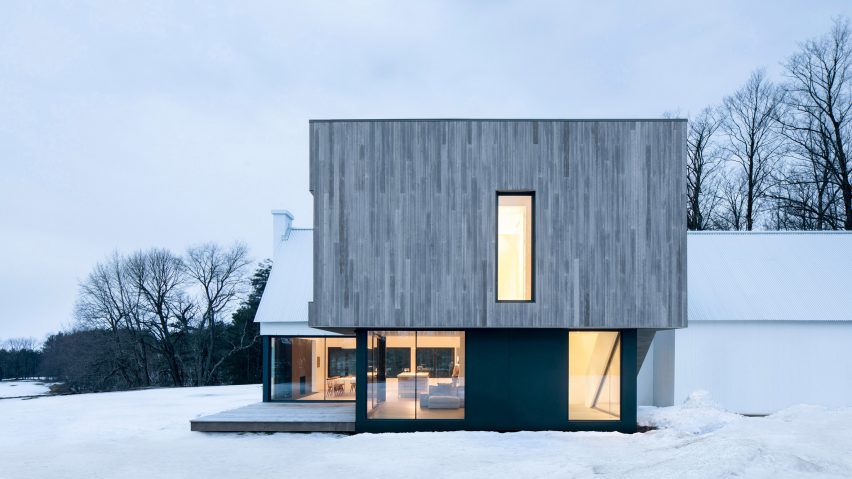
Other stories that Dezeen readers enjoyed this week included a cedar-clad extension to a white farmhouse in Quebec, a brightly coloured logo for the Eurovision Song Contest 2020, and IKEA's redesign of the Mars Desert Research Station.